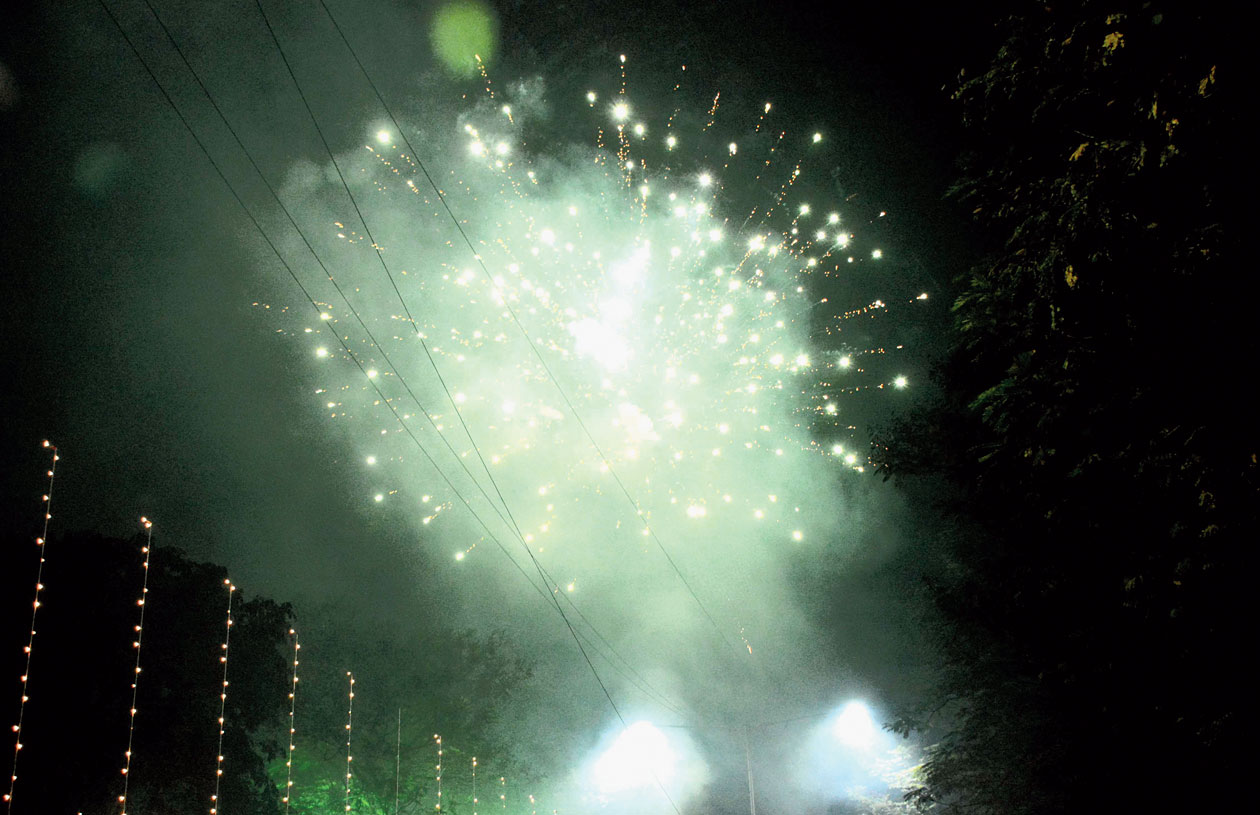Around midnight on Sunday, all automatic air quality monitoring stations in Calcutta showed an “air quality index” of 500, which is the poorest grade in India’s Air Quality Index and is categorised as “severe”.
Scientists said the actual air quality on Diwali night could be far worse than what the number suggests because the pollution meters in the monitoring stations are calibrated in a way that the index can never cross 500.
According to the Central Pollution Control Board, air with a “severe” Air Quality Index (AQI) “affects healthy people and seriously impacts those with existing diseases”.
Metro scanned the index values, documented jointly by the state and the central pollution control boards on the basis of the readings of seven automatic air monitoring stations in Calcutta and Bidhannagar, and found that all the stations recorded an AQI value of 500 close to midnight. The figure remained unchanged for three or four hours before dropping.
Ajay Mittal, who runs a citizen’s initiative called Kolkata Clean Air, said the readings showed the air quality was “severe” in places covered by a couple of stations even on Monday afternoon.
The air quality in other places during the period was “very poor”, he said.
The Air Quality Index bulletin for Calcutta, which shows the average figure of past 24 hours, graded Calcutta’s air quality as “very poor” at 8.40pm on Monday.
At 8.40pm on Monday, the 24-hour-average in five out of the seven automatic air quality monitoring stations was “very poor”. Such air can trigger “respiratory illness on prolonged exposure”.
The five stations that recorded “very poor” air quality are at Fort William, Jadavpur, Rabindra Sarobar and Victoria Memorial and on the BT Road campus of Rabindra Bharati University.
Rabindra Sarobar and Victoria Memorial are among the greenest zones in the city.
The stations at Birla Industrial and Technological Museum in Ballygunge and in Salt Lake recorded “poor” readings. In Howrah, the stations in Ghusuri and Belur Math also recorded “very poor” readings.
In all cases, PM2.5 was the most prominent pollutant. Scientists said the polluting particles are so tiny that they can pass through nostrils and enter the bloodstream.
Bigger particles get blocked by nostrils.
“Firecracker explosion releases highly toxic chemicals, many of which are carcinogenic, along with PM2.5. The toxic chemicals get attached to fine particles like PM2.5, which act as the carrier of the toxic substances inside our body,” said a scientist.
The toxic chemicals then enter the bloodstream and can even get lodged in organs such as lungs and kidneys. “The impact of such particles on the human body is dangerous,” said a scientist.
In India, the AQI is calculated on the basis of the concentration of the dominant pollutant, which was PM2.5 on Diwali night in Calcutta. PM10, slightly bigger than PM2.5, came a close second.
“Clearly, fireworks play a major role in polluting the air. People need to understand that the resultant toxicity affects their own health,” said Kalyan Rudra, the chairman of the state pollution control board.
The data also showed that the level of air toxicity on Sunday night was close to the level of air pollution recorded during Diwali last year.
Till now there is no law to counter air pollution on Diwali or other festivals.
“We criss-crossed the city on Diwali night and saw a haze of pollution all around. Its impact on human health is very high,” said physician and former Calcutta sheriff Dulal Bose, who was part of a team of Sabuj Mancha, a citizens’ initiative to address environment concerns, that monitored air quality throughout Sunday night.
“Diwali pollution triggers upper respiratory allergy, bronchiospasm and other respiratory diseases, mainly in children and those already affected,” Bose said.
Sanjana Agarwal, a Bangur resident, said she had to keep all her windows shut as the air felt heavy and the smell of burnt fireworks hung in the air.
“Apart from the deafening noise, we had to contend with haze and smoke. Despite it being a ritual to keep the front door open on Diwali, I was forced to shut it as we could barely breathe,” said Agarwal.
“I am suffering from brochial distress and doctor said it is the Diwali gift,” said noise crusader Gitanath Ganguly.










